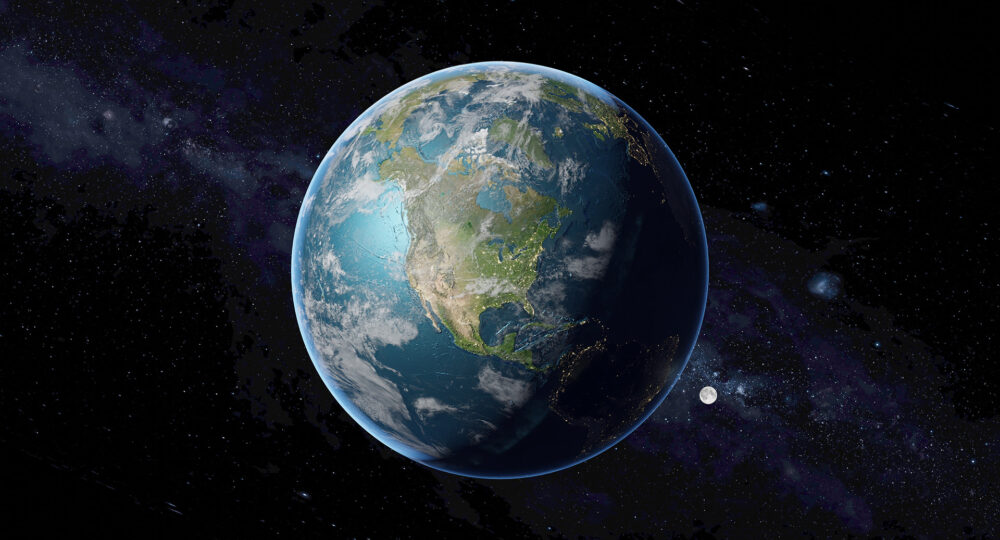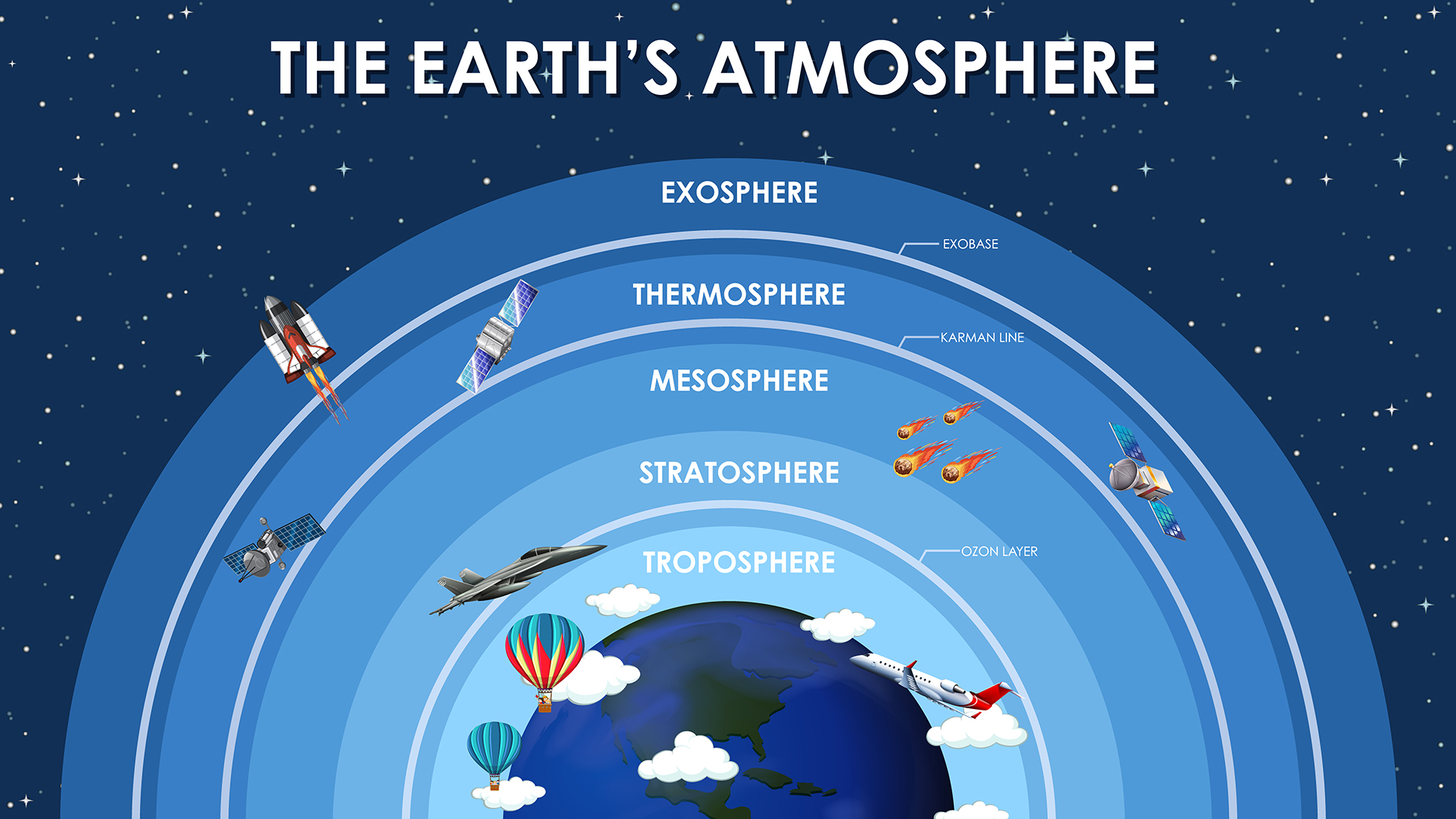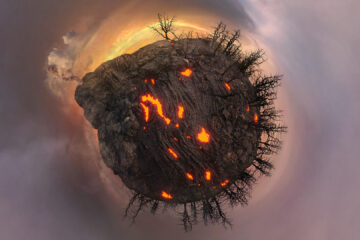
The Big Blue Sky: Earth’s Amazing Atmosphere
Up, Up and Away! Earth's atmosphere explained for the young minds.

Sophia
Our Earth is a special planet, with a magical cloak called the atmosphere. Imagine a giant, invisible blanket that wraps around the Earth. This isn’t just any blanket – it’s a superhero cape that keeps everything on Earth safe and cosy!
What is this Earth’s atmosphere?

Mili

Sophia
The Earth’s atmosphere consists of several layers and invisible gases that cover our planet. Those gases are nitrogen, like the quiet and strong guardian, and oxygen, the breath of life for all creatures and traces of other gases. This mixture is what we breathe in every day. Without it, we cannot live, play, or enjoy our favourite ice cream!
Alright. Tell me more about those wonderful layers.

Mili

Sophia
Imagine a delicious layered cake, each layer with its own superpowers. The closest layer to us is the Troposphere, where all the weather magic happens. Here, clouds dance, rainbows paint the sky, and sometimes, it even snows! Above the Troposphere, there’s the Stratosphere. This is where the famous Ozone Layer lives, like a pair of sunglasses for the Earth, protecting us from the Sun’s bright and harmful rays. Higher up, we have the Mesosphere, where shooting stars burn up, putting on a light show for us. Then, there’s the Thermosphere, where the Northern Lights wave their colourful curtains. Finally, the Exosphere, the topmost layer, gently touches space.
That’s really interesting!! I want to know more about the proportion of gases and the layers.

Mili

Sophia
Sure. Earth’s atmosphere is a complex and dynamic system, consisting of various gases and distinct layers, each with its own unique characteristics and functions. Here’s an overview:
Constituents of Gases
- Nitrogen (N₂) – About 78% of the atmosphere is nitrogen, a relatively inert gas that plays a crucial role in the formation of proteins in living organisms.
- Oxygen (O₂) – Approximately 21% of the atmosphere is oxygen, essential for the respiration of most living organisms and for combustion processes.
- Argon (Ar) – Around 0.93%, argon is a noble gas and plays a minimal role in the chemical processes of the atmosphere.
- Carbon Dioxide (CO₂) – Though only about 0.04%, carbon dioxide is crucial for photosynthesis in plants and acts as a greenhouse gas, trapping heat in the atmosphere.
- Inert Gases – This includes gases like neon, helium, methane, krypton, and ozone. They are present in very small amounts but can have significant impacts, like ozone (O₃), which forms a layer in the stratosphere protecting life from harmful ultraviolet (UV) rays.
Layers of the Atmosphere

- Troposphere – The lowest layer, extending up to about 8-15 kilometres (5-9 miles) above Earth. It contains most of the atmospheric water vapour and is where weather phenomena occur.
- Stratosphere – Extends from the top of the troposphere to about 50 kilometres (31 miles) above Earth. It contains the ozone layer and experiences a temperature increase with altitude.
- Mesosphere – Ranging from 50 to 85 kilometres (31 to 53 miles) above Earth. This layer is where most meteoroids burn up upon entering the atmosphere.
- Thermosphere – Extends from 85 kilometres (53 miles) to 600 kilometres (372 miles) above Earth. It’s characterized by high temperatures and is where the auroras occur. This layer includes the Ionosphere, which is important for radio communication.
- Exosphere – The outermost layer, extending from the top of the thermosphere to about 10,000 kilometres (6,200 miles) above Earth. It’s where the atmosphere merges into space.
Each layer plays a critical role in supporting life on Earth and in protecting the planet from various space phenomena. The atmospheric composition and the distinct characteristics of these layers are essential for maintaining Earth’s climate and weather systems.
Why is the Atmosphere so important?

Mili

Sophia
Think of the atmosphere as Earth’s best friend. It helps keep our planet warm enough to have rivers and oceans but not so hot that we can’t build snowmen in winter. It’s like a big, comfy cushion that keeps the Earth at just the right temperature. Also, the atmosphere is Earth’s shield. It protects us from meteors – which are like space rocks. Most meteors burn up in the atmosphere before reaching us, like marshmallows roasting on a campfire.
Does this atmosphere play any role in changing the colours of the sky?

Mili

Sophia
Yes, When the Sun shines, its light travels through the atmosphere, scattering colours in all directions. Blue light scatters the most, which is why the sky is blue. At sunset, the light has to travel through more atmosphere, so we see beautiful reds, oranges, and pinks.
What else left to know about this atmosphere?

Mili

Sophia
Our amazing atmosphere does so much for us, and we need to take care of it in return. Pollution can harm the atmosphere, making it hard for the planet to stay healthy. By doing simple things like recycling, using less electricity, and planting trees, we can help keep our atmosphere clean and strong. The Earth’s atmosphere is truly a superhero, a guardian of life. It’s a fascinating and magical part of our planet that deserves our protection. So, the next time you look up at the sky, remember the wonderful invisible blanket above and all the incredible things it does for us and our beautiful Earth. Let’s promise to be Earth’s associates, helping to take care of this wonderful planet and its enchanting sky blanket!






